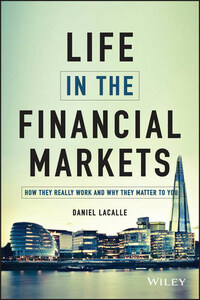This edition first published 2015
© 2015 John Wiley & Sons, Ltd
Translated and updated from the Spanish edition Nosotros, Los Mercados published in 2013 by Ediciones Deusto, an imprint of Centro de Libros Papf, S.L.U.
Registered office
John Wiley & Sons Ltd, The Atrium, Southern Gate, Chichester, West Sussex, PO19 8SQ, United Kingdom
For details of our global editorial offices, for customer services and for information about how to apply for permission to reuse the copyright material in this book please see our website at www.wiley.com.
All rights reserved. No part of this publication may be reproduced, stored in a retrieval system, or transmitted, in any form or by any means, electronic, mechanical, photocopying, recording or otherwise, except as permitted by the UK Copyright, Designs and Patents Act 1988, without the prior permission of the publisher.
Wiley publishes in a variety of print and electronic formats and by print-on-demand. Some material included with standard print versions of this book may not be included in e-books or in print-on-demand. If this book refers to media such as a CD or DVD that is not included in the version you purchased, you may download this material at http://booksupport.wiley.com. For more information about Wiley products, visit www.wiley.com.
Designations used by companies to distinguish their products are often claimed as trademarks. All brand names and product names used in this book are trade names, service marks, trademarks or registered trademarks of their respective owners. The publisher is not associated with any product or vendor mentioned in this book.
Limit of Liability/Disclaimer of Warranty: While the publisher and author have used their best efforts in preparing this book, they make no representations or warranties with respect to the accuracy or completeness of the contents of this book and specifically disclaim any implied warranties of merchantability or fitness for a particular purpose. It is sold on the understanding that the publisher is not engaged in rendering professional services and neither the publisher nor the author shall be liable for damages arising herefrom. If professional advice or other expert assistance is required, the services of a competent professional should be sought.
Library of Congress Cataloging-in-Publication Data is available
A catalogue record for this book is available from the British Library.
ISBN 978-1-118-91487-8 (hbk) ISBN 978-1-118-91496-0 (ebk)
ISBN 978-1-118-91495-3 (ebk) ISBN 978-1-118-91494-6 (ebk)
Cover Design: Wiley
Cover Illustration: TK
In this book, I begin by trying to show the human side of the markets and the day-to-day joys and difficulties that they produce. Then I offer my general take on the economy and its crises and, lastly, provide a technical analysis of investing in the stock market based on my experiences as an investor.
It has been an immense pleasure for me to draw together several years of ideas, observations and analysis in a work that I hope the reader will find enlightening and to their liking.
By the time you have finished reading this book, the financial environment will have completely changed, the economy will be continuing to evolve and, with any luck, we will have the opportunity to continue learning something new. Remember that crisis is opportunity – as long as you also have a fair bit of luck.
The opinions expressed in this book are personal, and do not in any way reflect the opinion or philosophy of the company for which Daniel Lacalle works or its investments, nor do they constitute a buy or sell recommendation. The people described are composite characters composed of real and fictional people. Likewise, the companies and investment funds described are fictionalised and based on elements taken from a range of organisations.
Special thanks to:
Antonio González-Adalid, Emilio Ontiveros, Ken Griffin and Bernard Lambilliotte for everything I have learnt from them.
Roger Domingo, my editor Thomas Hyrkiel, Wiley, and Ediciones Deusto (Grupo Planeta), for their support.
Lorenzo Gianninoni, my first reader, for his invaluable feedback.









